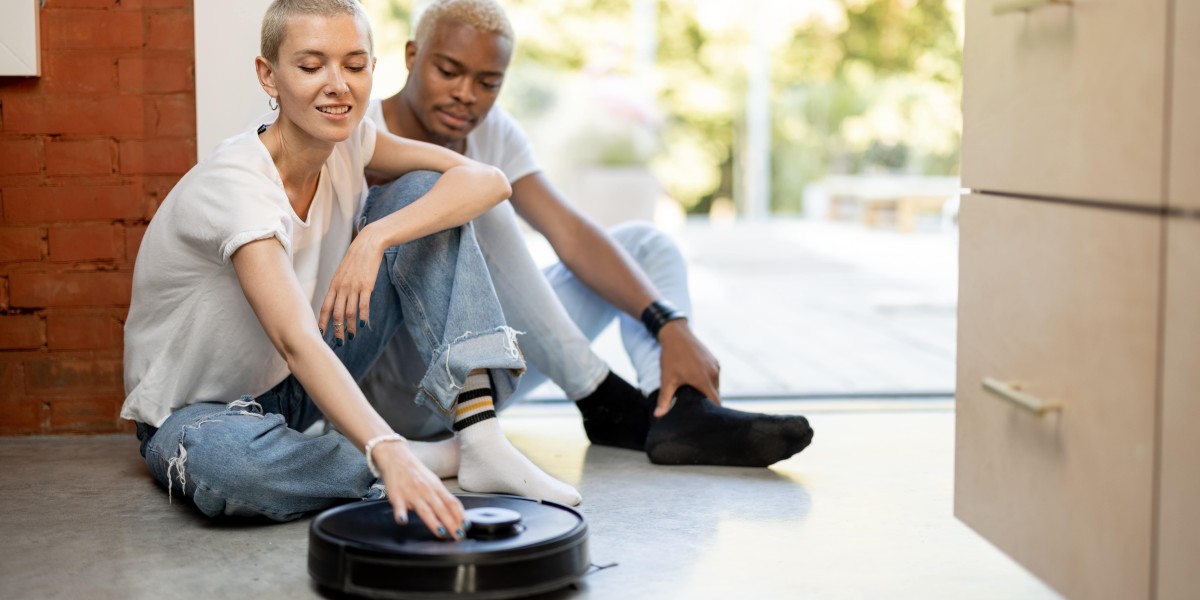 Robot vacuums can help keep your floors clean. Based on the model, they can also sweep or mop stairs.
Robot vacuums can help keep your floors clean. Based on the model, they can also sweep or mop stairs.Look for models that include clever features, such as remote control of apps and remote access. Apps can be used to plan cleaning sessions and track progress. Some apps allow you to stop, recharge and then pick up where they left off.
1. Battery Life
With cars that drive themselves, drones that navigate the skies and robot vacuums that nimbly maneuver around furniture, it's safe claim that the future of home cleaning is now here. As with any technology there is a need for some maintenance to ensure it's running smoothly.
The battery's charge-discharge cycles are the most crucial factor in the life of your robotic device. Make sure the dustbin is full and empty. Make sure you check for furs that are tangled and keep the brushes from jamming.
The location that your robot is kept can influence the performance of your battery. Extreme cold and heat could affect battery performance. You can help preserve the life of your battery by ensuring that it is fully charged prior to storage, storing in an environment that is cool and taking it off of sources of power when it is not in use. The majority of smart devices also come with periodic firmware updates which can improve performance and optimize battery. Check the app to see if there are any updates.
A robot vacuum is a fantastic alternative for those with many hard floors. It can quickly and effectively take away dirt and other debris, leaving your floors sparkling clean. If you're looking for more than just a quick cleanup, you'll want to choose a model that has superior navigation and obstacle avoidance.
Our top-rated robot, the Ecovacs Deebot T20, blends advanced navigation, strong suction and a range of mopping functions to provide an extensive, thorough clean of your floors. It utilizes LiDAR sensors and cameras to create detailed maps of your home. This helps it stay on the right path and avoid getting stuck on furniture legs or power cords. It can also detect items such as clutter and shoes, and clean around them automatically. It's also self-emptying so you don't have to return it to its base to empty the trash after every cleaning session.
2. Dust Bin
Robots are ideal for quick midweek clean-ups however, they lack the suction power to replace the power of a plug-in vacuum cleaner when it comes to deep cleans. Even the best robotic vacuums can be prone to getting caught in cords and toys. They can also ignore dirt piles in the vicinity of the baseboards, and struggle to eliminate crumbs from under furniture. And, their onboard dustbins are so full that they have to return to their charging docks to self-empty, which can take up to an hour for certain models.
It is essential to select a robot vacuum with a large dustbin that can be emptied into the dock without having to return to finish the task. You'll need to decide if you prefer bagged models or a bagless one. If you choose the bagless option, you'll need to know how much dust it will hold before you can empty it.
In our tests, we apply 100 grams of sand to the carpet in a medium pile and use a robot vacuum to clean the carpet. Weighing the amount of sand in the dust bin onboard allows us to determine the amount dirt that has been collected. A large amount suggests that the bin onboard may get fuller and force your robot to stop cleaning.
It's good to know that a lot of robot vacuums have large dust bins that is easily emptyable. It is also possible to schedule them to empty their bases at least one or two times a day. Keep a container filled with compressed air in your bag to blow away hairs that have gotten caught in the rotating brush, and to clean the filters in accordance to the manufacturer's instructions.
3. Wi-Fi Connectivity
The top robot vacuums have many options to connect to your home's WiFi network. This lets the robot update its software and also gives you the possibility of monitoring your robot via an app or voice commands. This isn't a necessity, however it provides convenience and customization options that can improve the overall robot vacuuming experience.
Most models require a certain amount of regular maintenance, like emptying the dust bin or cleaning the brush roll to keep them functioning at their peak performance. Keeping tabs on consumable components and a regular schedule for cleaning and detachment will increase their life span too. Vacuum expert Emily Rairdin at University Vacuum & Sewing says three to five years is the average life expectancy for a robot vacuum, though this can differ greatly based on how often you use it and whether you take care to maintain it properly.
To be able to function a robot vacuum, it has to be able to map out your floors and navigate around obstacles. Advanced navigation systems incorporate cliff sensors, which alert the robot of steep drops. They also have optical and laser sensors to help it "see" the layout of a room. Certain robots have mopping functions that can be used to maintain floors between deep cleanings with vacuums.
The most efficient 2-in-1 robots mop and vacuum, allowing you to skip the step of having to switch between two types of vacuum. The iRobot Roomba 690 is a powerful, highly efficient robot vacuum cleaner that can also clean its mop pad and clean up surfaces with its water tank. Its top-quality mapping and obstacle-avoidance abilities made it the best robot vacuum award, as well as an AVTech Editors Choice award.
4. Cleaning Patterns
The top robot vacuums in our tests have excellent pick-up scores for carpets with a low pile and hard floors, removing dirt, dust and pet hair. They also take out particles and crumbs along the baseboards as well as at the edges of rooms. They aren't able to remove dirt that is deep-seated or tangles of plush shag fibers like canisters or uprights. They cannot pick up spilled liquids, food items, or use heavy metal screws. They can also miss certain areas (including under furniture).
Many models have intelligent features that make them more user friendly. Many models come with an app that lets you schedule cleaning times and control the robot remotely. They can be connected to your smart home system to allow voice commands using Amazon Alexa or Google Assistant. Some models have multiple modes that let you pick between mopping, sweeping and vacuuming. They can also return to their docks for a recharge and pick up where they left off.
Obstacle-avoidance technology has advanced in recent years, however you still need to clear out toys, cords, and pet messes before operating the robot. You'll also want to cover any mirrors from floor to ceiling with cardboard prior to tracing out the room for the first time, robotvacuummops because the laser used by certain models may bounce off reflective surfaces, causing the robot to hit a wall or floor.
Some of the top models utilize lidar to create 3D maps of your surroundings. This allows the robot to identify obstacles and create an efficient route around them. Some robots allow you to create no-go zones to ensure that the robot is able to avoid certain areas, for example, your pet's food bowls or a costly rug.
5. App Control
You can create a schedule for cleaning and manage the robots through an app. This allows you to clean your home while you're at work or on vacation. Some robots also have the ability to self-empty to a larger bin at their base, which reduces dust re-release and is a wonderful option for those suffering from allergies.
Some robots, like the pricier Roborock S8 Pro Ultra, can even detect objects on the floor and use a camera to coach them to stay clear of obstacles such as furniture legs, power cords or pet toys. This feature is also available on smaller models. However, it's important to regularly empty your robot's dustbin and check for hairs that are tangled when they begin to accumulate.
A high-end model is also able to store multiple floor maps, which is useful if you live on more than one level Some models also create 3D models of your home. You can select certain rooms, and set up digital "keep-out" zones to ensure your robot only cleans the areas you want.
Robots are great for midweek cleaning, but they cannot substitute a vacuum cleaner with a plug-in particularly when it comes to rugs. They are better in removing dirt from carpet than bare flooring, but they can not pick up piles close to baseboards and thresholds as well as tangled cords and socks. Choose a model that has zones and spot cleaning modes. This allows you to concentrate on certain areas and not waste time. There are also models that recharges and resumes where it left off which is an enormous advantage in a big house.








